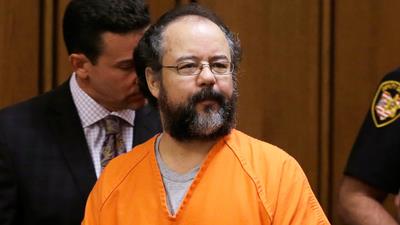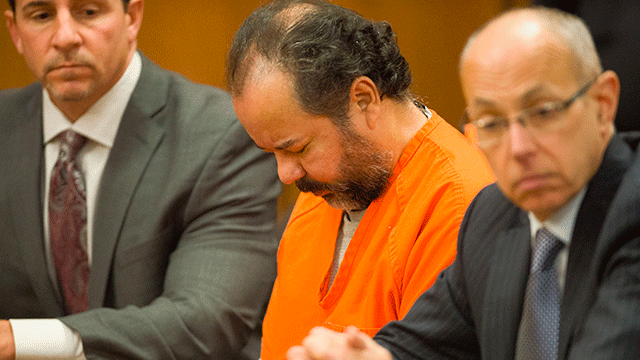The Ariel Castro trial was one of those cases that had the nation glued to their screens. A chilling combination of horror and resilience unfolded, showcasing the triumph of justice against the backdrop of unimaginable suffering. In this article, we’ll dissect the Ariel Castro trial verdict, explore key evidence, highlight victim testimonies, and delve into the media coverage that shaped public perception. Buckle up—this is a deep dive into a trial that rocked the nation and raised crucial questions about justice and humanity.

The Timeline of Terror: Ariel Castro's Crimes
The Ariel Castro trial timeline of events reads like a horror story. Between 2002 and 2004, Castro kidnapped three young women—Michelle Knight, Amanda Berry, and Georgina DeJesus—keeping them imprisoned for years in his Cleveland home.
- 2002: Michelle Knight is abducted at just 21 years old.
- 2003: Amanda Berry is taken the day before her 17th birthday.
- 2004: Georgina DeJesus, only 14, is captured while walking home from school.
Each year stretched painfully for the women, filled with abuse and deprivation. The trial began in 2013, after Berry's courageous escape prompted a police investigation that uncovered the truth of their captivity. This shocking timeline serves as a stark reminder of the horrors they endured and the resilience they exhibited in reclaiming their lives.
Key Evidence That Sealed Castro’s Fate
When it came to the Ariel Castro trial, the key evidence details painted a horrifying picture of his crimes. The prosecution presented a mountain of evidence, including:
- Physical Evidence: Police discovered chains and padlocks in Castro's home, which he used to restrain his victims.
- Testimonies from the Survivors: The women’s accounts were chilling. They detailed the daily abuses they faced, including physical violence and psychological manipulation.
- Video Documentation: Disturbingly, Castro recorded some of his actions, which were played in court, leaving the jury and the public horrified.
The culmination of this evidence was pivotal in the trial. Castro’s own words, along with the physical proof of his heinous acts, led to a swift verdict: guilty on 937 counts, including kidnapping and rape. It’s hard to imagine the emotional toll on the victims as they relived these traumatic experiences, yet their bravery was essential in bringing Castro to justice.

Victim Testimonies: Voices of Survival
One of the most powerful aspects of the Ariel Castro trial was the victim testimonies. Each woman took the stand, sharing her harrowing story of survival.
- Michelle Knight: Knight’s testimony was particularly heart-wrenching. She spoke of her struggles with self-worth and the impact of the abuse on her psyche.
- Amanda Berry: Berry famously said, “I’m free now,” during her escape. Her account brought tears to many eyes as she recounted the moment she found the courage to break free.
- Georgina DeJesus: DeJesus, the youngest victim, spoke about the fear she lived in every day and how she dreamed of returning to her family.
The courage these women displayed in the courtroom was palpable. Their stories not only held Castro accountable but also provided a platform for many others who had suffered similar abuses to find their voice.
Media Coverage: Shaping Public Perception
The Ariel Castro trial was a media sensation, with coverage that spanned local news to national headlines. The media played a dual role—both as a platform for the victims and a lens through which the public viewed the trial.
- Intense Coverage: News outlets provided continuous updates, dissecting every piece of evidence and testimony.
- Public Reactions: The public was outraged, with many rallying behind the victims and demanding justice. Social media exploded with hashtags supporting the survivors and condemning Castro.
- Documentaries and Analysis: Following the trial, various documentaries emerged, offering in-depth analysis of the case, including the Ariel Castro trial verdict analysis. These productions are crucial for understanding the broader implications of the trial on societal views of sexual violence and justice.
The media’s role in this trial was essential, not just for informing the public but also for holding the judicial system accountable. It highlighted the need for change in how such cases are handled, ensuring that victims’ voices are heard and justice is served.

Conclusion: A Call to Action for Awareness and Support
The Ariel Castro trial was a complex tapestry of horror, resilience, and ultimately, justice. It serves as a reminder of the strength of survivors and the importance of believing and supporting those who come forward with their stories.
As we reflect on the key takeaways from this trial, it’s crucial to advocate for continued awareness around issues of sexual violence and victim support. By sharing stories, educating ourselves, and standing in solidarity with survivors, we can work towards a future where justice is not just served, but is also swift and unequivocal.
If you or someone you know is a victim of abuse, know that you are not alone. Reach out to local support services or hotlines for help. Justice and healing are possible, and your voice matters.